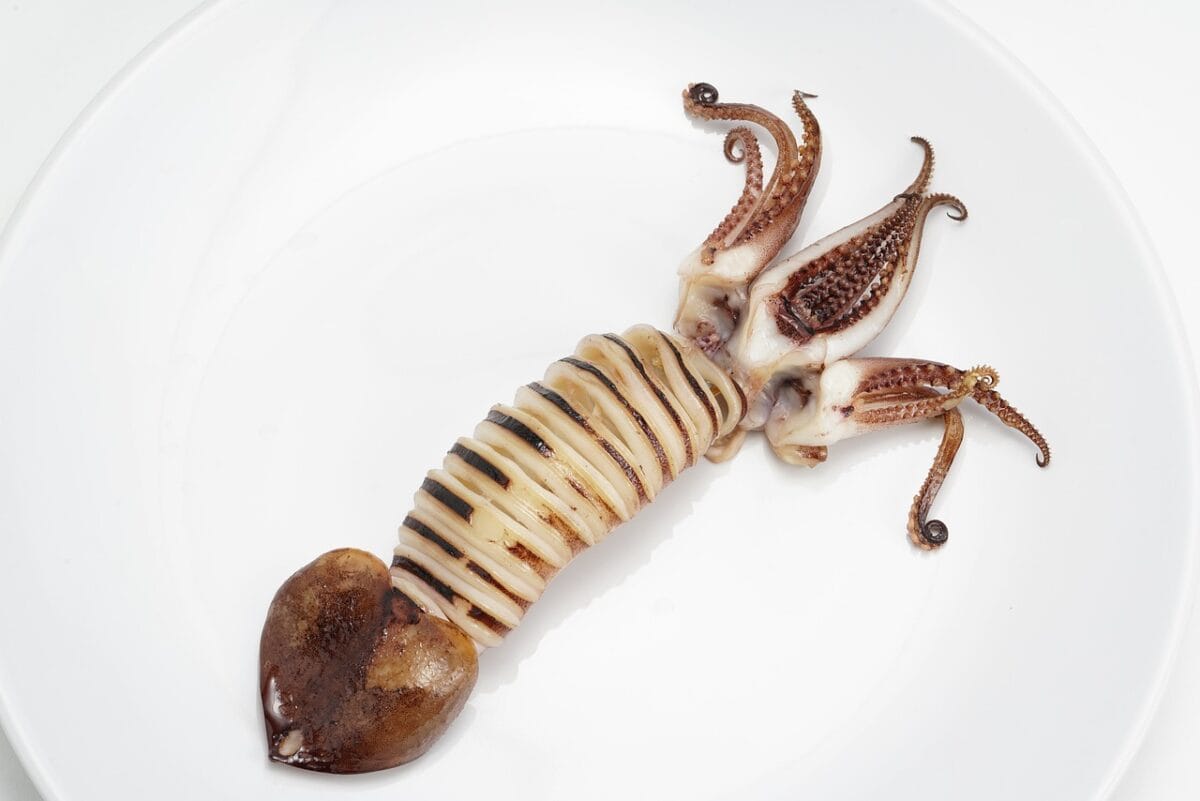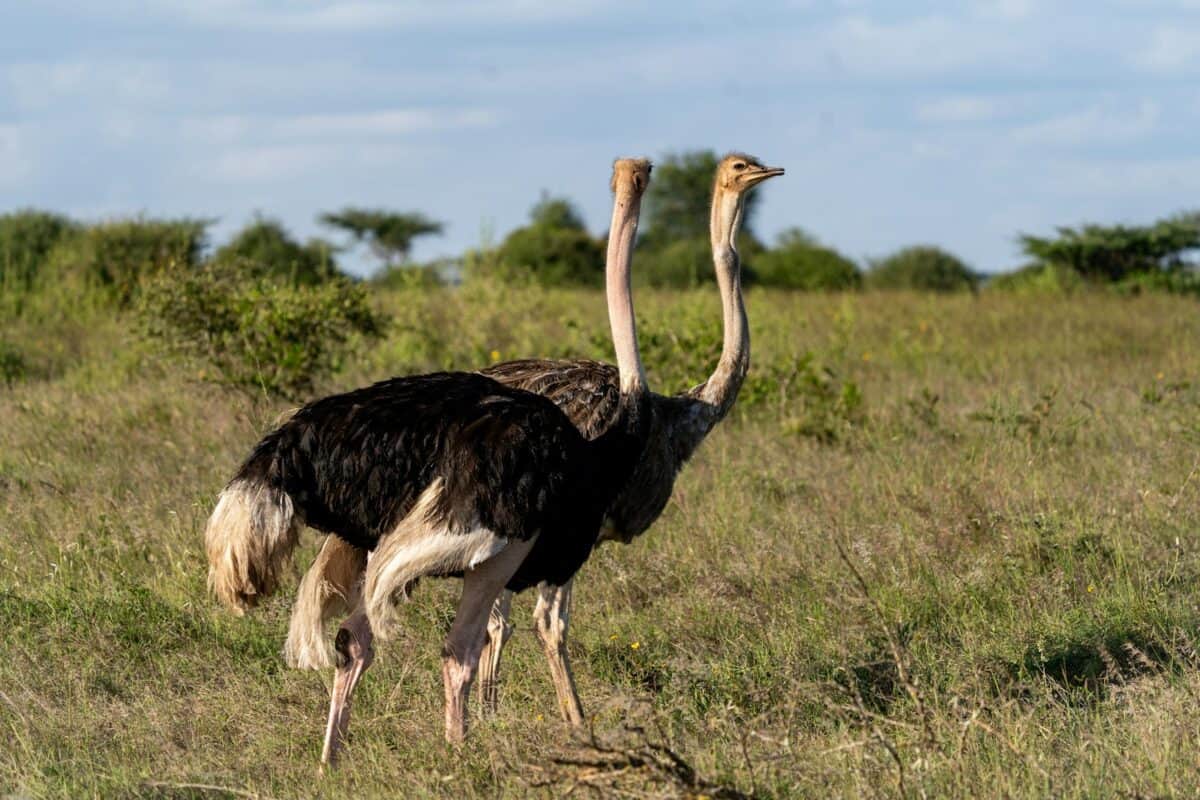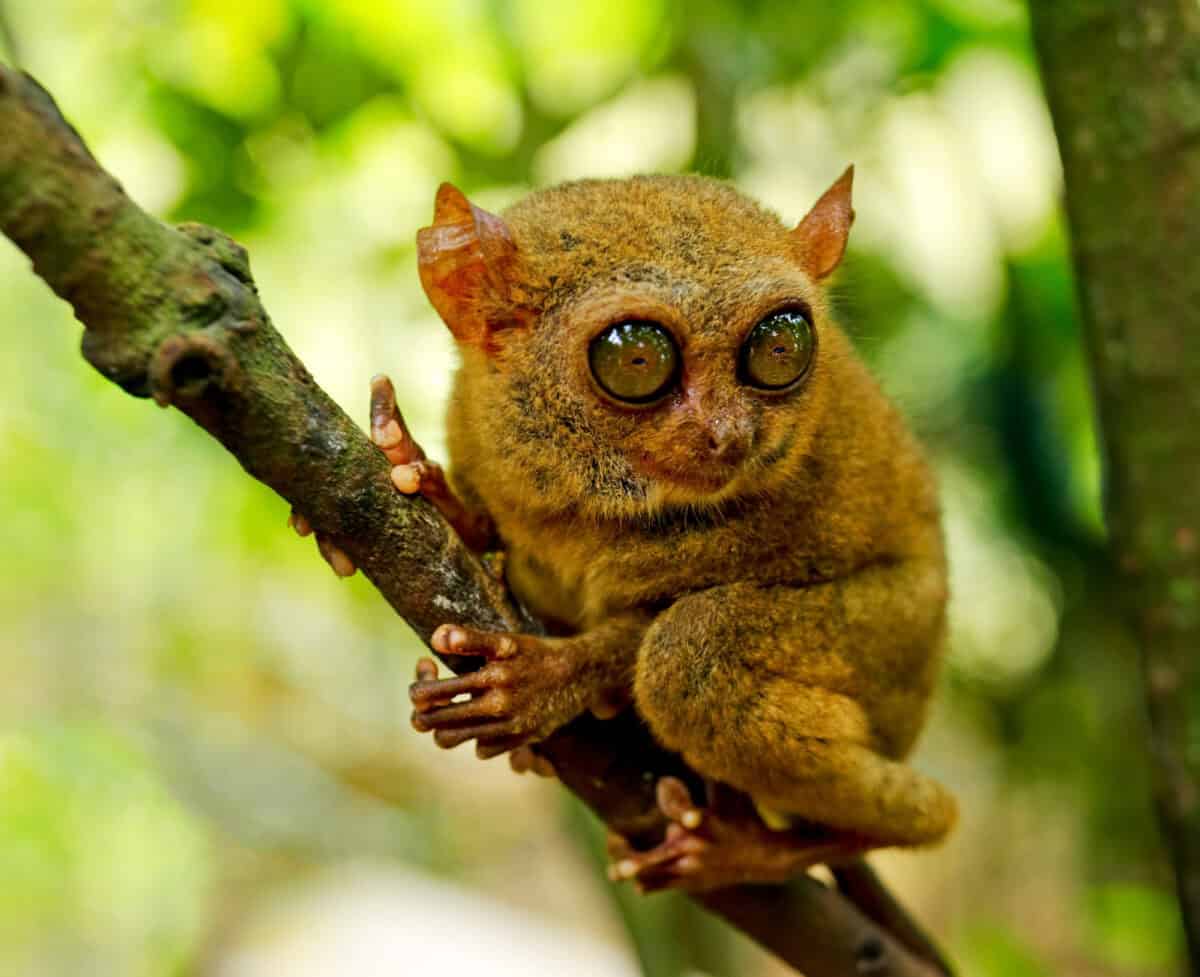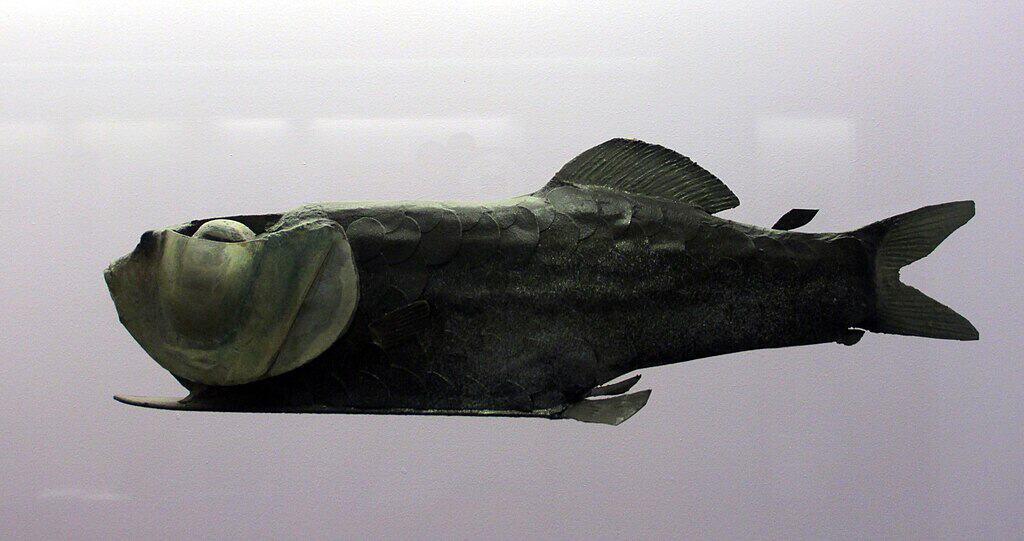In the vast diversity of the animal kingdom, evolution has crafted remarkable adaptations that allow creatures to thrive in their environments. Among these adaptations, eyes stand out as extraordinary organs that provide the gift of sight, with tremendous variation in size, structure, and capabilities across species. Some animals have developed exceptionally large eyes relative to their body size, often as an adaptation to their specific ecological niches. From the depths of the ocean to the skies above, these remarkable visual organs help predators hunt, prey escape, and nocturnal animals navigate in darkness. This article explores the ten animals with the most impressive eyes in terms of absolute size or relative to body proportion, delving into the fascinating science behind these visual marvels and what makes them so uniquely adapted to their owners’ needs.
The Giant Squid’s Basketball-Sized Eyes

The giant squid (Architeuthis dux) holds the record for the largest eyes ever measured in the animal kingdom. These deep-sea dwellers possess eyes that can reach up to 10 inches (25 centimeters) in diameter—roughly the size of a basketball. These colossal visual organs serve a crucial purpose in the perpetual darkness of the deep ocean, where the giant squid resides at depths between 300-1,000 meters. The enormous eyes collect what little light exists in these depths, particularly bioluminescence from other organisms and the faint downwelling light from the surface. Scientists believe these massive eyes evolved specifically to detect the faint bioluminescent trails of their primary predators—sperm whales—allowing the squid to identify threats from considerable distances. The eyes’ size maximizes light-gathering capacity, giving these elusive creatures a vital survival advantage in their mysterious deep-sea habitat.
Colossal Squid’s Light-Detecting Marvels

The colossal squid (Mesonychoteuthis hamiltoni), dwelling in the Antarctic waters, possesses eyes that rival and occasionally exceed those of its cousin, the giant squid. These remarkable organs can measure up to 11 inches (28 centimeters) in diameter, making them potentially the largest eyes of any living creature. What makes the colossal squid’s eyes particularly fascinating is their unique structure—they feature built-in light organs called photophores on the periphery of their eyes. These specialized organs are believed to help the squid detect prey in the dark depths through a mechanism called counter-illumination, where the light helps eliminate telltale shadows of approaching prey. Additionally, these massive eyes contain specialized receptors that enable them to distinguish between ambient light and bioluminescence, providing extraordinary visual acuity in their deep-sea environment. The size and complexity of the colossal squid’s eyes represent an evolutionary masterpiece for deep-sea survival.
The Ostrich’s Oversized Ocular Organs

Among land vertebrates, the ostrich (Struthio camelus) claims the title for the largest eyes. These flightless birds possess eyes measuring approximately 2 inches (5 centimeters) in diameter—larger than their own brain. The ostrich’s impressive eyes are the largest of any land vertebrate, an adaptation that provides these savanna-dwelling birds with exceptional visual capabilities. Their eyes are positioned on the sides of their head, granting them a nearly 360-degree field of vision that proves invaluable for spotting predators across the open plains of Africa. Additionally, the large size allows for excellent visual acuity at long distances, with scientists estimating they can detect movement up to 2.2 miles (3.5 kilometers) away. This remarkable visual ability complements the ostrich’s renowned speed, allowing it to spot threats early and utilize its powerful legs to escape danger. The combination of extraordinary vision and fleet-footedness has proven to be an effective evolutionary strategy for the world’s largest bird.
The Horse’s Enormous Eye-to-Body Ratio

Horses (Equus caballus) possess some of the largest eyes among mammals, with eyeballs measuring approximately 1.5 inches (3.8 centimeters) in diameter. What makes their eyes particularly remarkable is not just their absolute size but their enormous proportional size relative to their skull. This large eye-to-body ratio gives horses exceptional peripheral vision, with a visual field spanning nearly 350 degrees—a crucial adaptation for a prey animal that must remain vigilant for predators. Horse eyes contain a high concentration of rod cells, which are specialized for detecting movement and functioning in low-light conditions, allowing them to see reasonably well at dusk and dawn when predators are most active. Their eyes also feature a reflective layer called the tapetum lucidum, which enhances their night vision by reflecting light back through the retina, giving their eyes the characteristic “shine” when caught in headlights or flashlight beams. These visual adaptations perfectly suit horses’ evolutionary history as prey animals in open grasslands.
Tarsiers and Their Disproportionate Visual Organs

The tarsier (family Tarsiidae) holds the record for the largest eye-to-body size ratio of any mammal. These small primates, weighing only about 100-150 grams, possess eyes that are each approximately 16mm in diameter—roughly the same size as their entire brain. If humans had eyes proportionally as large as tarsiers, our eyes would be the size of grapefruits. This extraordinary adaptation serves these nocturnal hunters well, as they rely almost exclusively on visual predation in the dark forests of Southeast Asia. Unlike many nocturnal mammals, tarsiers lack the reflective tapetum lucidum; instead, they’ve evolved these enormous eyes to gather as much light as possible. Their eyes are fixed in their sockets and cannot move, but tarsiers can rotate their heads nearly 180 degrees in either direction, giving them an owl-like ability to survey their surroundings. These specialized visual adaptations have come at a cost, however—tarsiers have lost much of their sense of smell compared to other primates, demonstrating how evolution has prioritized vision for these unique creatures.
The Swordfish’s Heat-Producing Eyes

The swordfish (Xiphias gladius) possesses remarkably large eyes for a fish, with diameters reaching up to 3.5 inches (9 centimeters). What makes their eyes truly extraordinary, however, is not just their size but their specialized adaptations for hunting. Swordfish have evolved a unique heating mechanism specifically for their eyes and brain, making them partially warm-blooded in these areas while the rest of their body remains cold-blooded. Specialized tissues near their eyes function as “heaters,” warming the retinas up to 10-15°C above the surrounding water temperature. This adaptation significantly improves visual processing speed and clarity, allowing swordfish to detect fast-moving prey in dim, deep waters. The large size of their eyes complements this heating system by gathering more light during deep dives, where they hunt at depths exceeding 2,000 feet (600 meters). These combined adaptations create a visual system perfectly suited for a high-speed predator that moves between varying depths and light conditions in pursuit of prey.
The Nocturnal Visual Prowess of Owls

Owls (order Strigiformes) possess disproportionately large eyes for their skull size, with some species like the great horned owl (Bubo virginianus) having eyeballs nearly an inch in diameter. These remarkable eyes are so large that they cannot move within their sockets—instead, owls must turn their entire head to change their visual direction, capable of rotating their necks up to 270 degrees. This limitation is compensated by extraordinary visual capabilities, particularly in low-light conditions. Owl eyes contain an exceptionally high density of rod cells—the photoreceptors responsible for night vision—allowing them to see in light levels up to 100 times dimmer than what humans require. Additionally, their eyes feature a highly developed tapetum lucidum that reflects light back through the retina, effectively giving photons a “second chance” to be detected. Unlike most birds with eyes on the sides of their heads, owls have forward-facing eyes that provide binocular vision and excellent depth perception—crucial advantages for locating and precisely striking prey in three-dimensional space during nocturnal hunting.
The Remarkable Case of the Whale Shark

The whale shark (Rhincodon typus), the largest living fish species, possesses relatively small eyes considering its massive body size—measuring only about 3 inches (7.6 centimeters) in diameter on a creature that can reach lengths of 40 feet (12 meters). However, these eyes are exceptionally adapted to their owner’s unique ecological niche and behavior. Unlike many large marine predators that rely primarily on vision, whale sharks have evolved a more complex sensory system that complements their visual capabilities. Their eyes are positioned on the sides of their broad, flat head, providing excellent peripheral vision that helps them monitor their surroundings while filter-feeding. Recent research has revealed that whale shark eyes contain numerous rods and cones, suggesting they likely have color vision, unusual for a deep-diving species. Additionally, their eyes contain specialized adaptations that allow them to adjust to dramatic changes in light intensity as they move between depths during their daily vertical migrations, sometimes diving to over 1,900 meters where almost no light penetrates.
The Eagle’s Visual Superiority

Eagles, particularly the golden eagle (Aquila chrysaetos) and bald eagle (Haliaeetus leucocephalus), possess some of the most acute vision in the animal kingdom, supported by relatively large eyes for their body size. An eagle’s eye is nearly the same size as a human’s, despite their much smaller body mass. What makes eagle vision truly remarkable is not just eye size but the density of visual receptors—their retinas contain up to five times more photoreceptors than human retinas, with approximately one million photoreceptors per square millimeter compared to our 200,000. This extraordinary receptor density gives eagles visual acuity estimated to be 4-8 times sharper than human vision. Additionally, eagles can see a much wider range of colors, including ultraviolet light invisible to humans. Their visual prowess allows them to spot small prey like rabbits from altitudes of up to 3,000 feet (915 meters). To protect these vital organs, eagles have developed specialized nictitating membranes—transparent eyelids that sweep horizontally across the eye during high-speed dives, keeping the cornea clean and moist without sacrificing visibility.
The Bizarre Eyes of the Mantis Shrimp

The mantis shrimp (order Stomatopoda) possesses what may be the most complex visual system in the animal kingdom, despite their eyes not being particularly large in absolute terms. These compound eyes sit on mobile stalks and can move independently of each other, giving the mantis shrimp extraordinary visual coverage of its environment. What makes these eyes truly remarkable is their unparalleled color perception—while humans have three types of color-detecting cone cells (red, green, and blue), mantis shrimp have 12 to 16 different types of photoreceptors. This allows them to see ultraviolet, infrared, and polarized light invisible to most other creatures. Each eye is divided into three regions, giving the mantis shrimp trinocular vision and excellent depth perception with just one eye. Some species can even detect circularly polarized light—a capability not found in any other animal and only recently harnessed by humans through advanced technology. These extraordinary visual capabilities help mantis shrimp locate prey, recognize potential mates, and communicate with other mantis shrimp through complex visual signals in their vibrant coral reef habitats.
The Deep-Sea Barreleye’s Transparent Head

The Pacific barreleye fish (Macropinna microstoma) features one of the most bizarre visual adaptations in the animal kingdom. This deep-sea dweller possesses tubular eyes encased within a transparent, fluid-filled dome that constitutes the top of its head—essentially, the fish has a transparent skull through which its eyes are visible. These specialized eyes are extremely light-sensitive and point upward by default, allowing the barreleye to detect the silhouettes of potential prey against the faint downwelling light from the ocean surface. What makes this adaptation even more remarkable is that these tubular eyes can rotate within the transparent dome, enabling the fish to look forward when it spots potential food. The eyes are shielded from the bioluminescent glow of the fish’s digestive system by a layer of dark pigment. Living at depths between 600-800 meters (2,000-2,600 feet) where light is minimal, the barreleye’s unique visual system represents an extraordinary evolutionary solution to the challenges of hunting in the deep sea’s perpetual twilight zone.
Conclusion: Understanding the Evolutionary Marvel of Big Eyes

The remarkable diversity of oversized eyes throughout the animal kingdom demonstrates the power of evolutionary adaptation to specific ecological challenges. From the colossal eyes of deep-sea squid that maximize light collection in perpetual darkness to the proportionally enormous eyes of tarsiers that enable nocturnal hunting without relying on other senses, large eyes have evolved independently multiple times across different animal lineages. The prevalence of these adaptations underscores the critical importance of vision for survival across numerous ecological niches. Beyond mere size, these visual systems have evolved specialized features like the mantis shrimp’s multiple photoreceptors or the swordfish’s eye-warming tissue that further enhance their functionality in particular environments. The study of these extraordinary visual organs continues to inspire innovations in camera technology, optical instruments, and even medical treatments for human vision disorders. As we continue to explore the less accessible regions of our planet, from deep oceans to dense rainforests, we may yet discover more visual adaptations that challenge our understanding of what evolutionary processes can achieve.
- 10 Animals That Could Make a Comeback Through Cloning - August 20, 2025
- How Darwin Frog Fathers Carry Their Tadpoles in Their Throat - August 20, 2025
- 11 Animals That Lived With Dinosaurs - August 20, 2025

